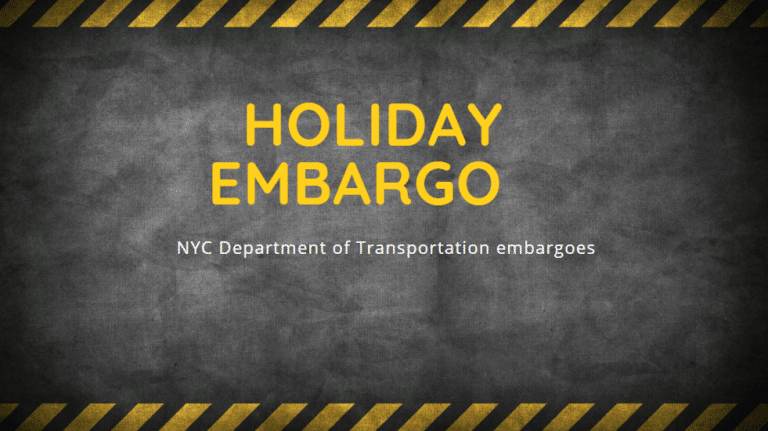Last Updated on March 26, 2025 by Jeffrey Calderon

Preventing OSHA Violations: A Guide for Construction
Osha violations are a significant concern for both homeowners and contractors, as they can lead to severe consequences such as worker injuries and costly fines. The Occupational Safety and Health Administration (OSHA) works to ensure workplace safety in the US by enforcing regulations that protect workers from hazardous conditions.
In this blog post, we will explore various aspects of OSHA, including who it protects, what compliance entails, how the administration keeps workers safe on jobsites, and common OSHA violations within the construction industry. By understanding these topics, you’ll be better equipped to work safely and maintain a secure environment for all involved parties.
What is OSHA?
The Occupational Safety and Health Administration is a federal agency that enforces workplace safety standards to ensure safe working conditions for employees.
OSHA develops industry-specific safety standards for construction, maritime operations, agriculture, and general industry workplaces.
Employers must comply with OSHA regulations, including the general duty clause requirements, to provide a work environment free from recognized hazards that could cause death or serious physical harm.
The Importance of Compliance with OSHA Regulations
Adhering to OSHA regulations can avert calamities and harm, shield businesses from expensive penalties and lawsuits, as well as result in higher efficiency, better staff spirit, and diminished workers’ compensation expenses.
OSHA’s Whistleblower Protection Program
OSHA’s Whistleblower Protection Program allows employees to report concerns about workplace health and safety issues without fear of retaliation, encouraging open communication between employees and management about potential hazards on job sites.
Who Does OSHA Protect?
OSHA is devoted to ensuring the safety of personnel in their job environment by implementing and monitoring security regulations that are relevant to various sectors across America.
Employees Covered by OSHA
OSHA covers all private sector employers and their workers in the United States, except for self-employed individuals or immediate family members employed on a family farm.
Industries Regulated by OSHA
OSHA’s regulations cover construction, manufacturing, agriculture, maritime operations, healthcare facilities, and more. Each industry has its own set of unique hazards that require specialized safety measures.
- Construction: Fall protection systems are required for heights above six feet
- Agriculture: Proper ventilation is necessary for enclosed spaces where pesticides are used or stored
- Healthcare: Employees must be trained on handling and disposing of hazardous materials
- Manufacturing: Machinery should have proper guards to prevent injuries from moving parts
Temporary Workers and Contractors
Temporary workers and contractors are also protected by OSHA, with both the host employer and staffing agency sharing responsibility for ensuring a safe work environment.
Overall, OSHA’s rules help guarantee a secure workplace and adherence to federal standards, no matter if it be on a building site or dealing with hazardous materials in the healthcare industry.
What is OSHA Compliance?

OSHA compliance signifies adhering to safety regulations issued by the Occupational Safety and Health Administration for safeguarding personnel from dangerous situations in their place of work.
Achieving OSHA Compliance: Key Steps
- Educate Yourself: Familiarize yourself with OSHA standards that apply to your industry or workplace
- Create a Safe Work Environment: Implement measures to minimize hazards and risks
- Train Employees: Ensure all employees receive adequate safety training
- Maintain Accurate Records: Keep detailed records of incidents, injuries, illnesses, and inspections
- Incorporate Continuous Improvement Practices: Continuously evaluate safety performance and implement corrective actions
Benefits of OSHA Compliance
- Reduced Workplace Injuries and Illnesses: A safer work environment results in fewer incidents, lower medical expenses, reduced workers’ compensation costs, and increased productivity
- Better Employee Morale: Prioritizing worker safety leads to higher engagement, satisfaction, retention rates, and improved overall company performance
- Fewer Legal Issues: Complying with OSHA regulations reduces the risk of fines or penalties and minimizes legal liability
- Improved Reputation: Companies known for prioritizing worker safety enjoy a positive reputation among customers, suppliers, investors, and other stakeholders
For further details on OSHA regulations, visit their website
How OSHA Keeps Workers Safe on Jobsites

OSHA sets and enforces safety standards, conducts inspections, provides training, issues citations, and offers resources to employers to create a safe work environment.
Setting and Enforcing Safety Standards
OSHA establishes safety regulations for different industries, covering everything from equipment use to hazardous materials handling.
Conducting Inspections
OSHA conducts regular inspections to ensure compliance with safety standards, issuing citations for any violations found.
Providing Training Programs
OSHA offers training programs, including online courses for construction professionals, to educate employees about potential hazards and best practices for avoiding accidents.
Issuing Citations for Violations
OSHA issues citations outlining specific violations and penalties, providing employers with an opportunity to correct issues before facing more severe consequences.
Providing Resources for Employers
OSHA offers resources such as Safety and Health Program Guidelines to help businesses develop comprehensive safety programs tailored to their unique needs.
OSHA is essential in safeguarding employees throughout the nation with rigorous safety regulations, assessments, instruction, penalties and materials for employers.
What are Common OSHA Violations?
Don’t be a violator. Learn about these common OSHA infractions to keep your job site safe and compliant.
A. Failing to Provide Proper Personal Protective Equipment (PPE)
Protect your workers from harm by providing the right PPE, like hard hats, safety glasses, gloves, and hearing protection.
B. Inadequate Fall Protection
Don’t let your workers fall flat. Implement proper fall protection measures, including guardrails, safety nets, or personal fall arrest systems.
C. Insufficient Employee Safety Training
Train your employees to recognize potential hazards and follow safety procedures to avoid accidents and OSHA violations.
D. Poor Maintenance of Machinery or Equipment
Maintain your machinery and equipment to ensure a safe work environment, free from malfunctions or accidents.
E. Improper Labeling of Hazardous Materials
Label hazardous materials properly with appropriate warning signs to help workers identify potential hazards quickly and take necessary precautions.
Stay safe and compliant by addressing these common OSHA violations proactively. Check out credible sources like OSHA for more information.
FAQs in Relation to Osha Violations
Top 5 OSHA Violations: What You Need to Know
1. Lack of proper fall protection – this is the most common violation and can lead to severe injuries or death. (source)
2. Inadequate hazard communication – workers have the right to know about the chemicals they are exposed to on the job. (source)
3. Insufficient scaffolding safety – scaffolding accidents can be prevented with proper training and equipment. (source)
4. Improper respiratory protection – breathing in hazardous substances can cause long-term health problems. (source)
5. Inadequate lockout/tagout procedures – failure to control hazardous energy during maintenance can lead to serious injuries. (source)
10 Most Frequently Cited OSHA Violations
- Fall Protection – protect your workers from falls with proper equipment and training. (source)
- Hazard Communication – ensure your workers know about the chemicals they work with. (source)
- Scaffolding Safety – prevent accidents with proper training and equipment. (source)
- Respiratory Protection – protect your workers from hazardous substances in the air. (source)
- Lockout/Tagout Procedures – control hazardous energy during maintenance to prevent injuries. (source)
- Ladder Safety – use ladders properly to prevent falls. (source)
- PPE Requirements – provide your workers with proper personal protective equipment. (source)
- Machinery Guarding Standards – protect your workers from moving machinery parts. (source)
- Forklift Safety – prevent accidents with proper training and equipment. (source)
- Eyewash and Shower Stations – provide your workers quick access to emergency eyewash and shower stations. (source)
Conclusion
Protect your workers and avoid costly fines by following OSHA compliance guidelines.
Creating a safe work environment is crucial for any project, whether you’re a homeowner or contractor.
Don’t let common OSHA violations like lack of fall protection or improper use of ladders put your workers at risk.
Stay up-to-date on safety regulations and standards to prevent workplace accidents and injuries.
Remember, prioritizing safety should always be a top priority on any job site.
For more information on OSHA compliance, check out these credible sources:
Stay safe and compliant!






